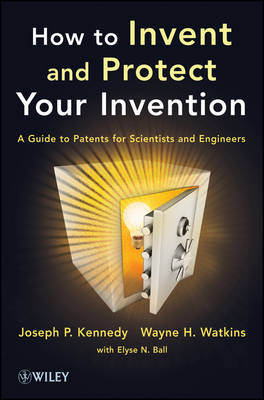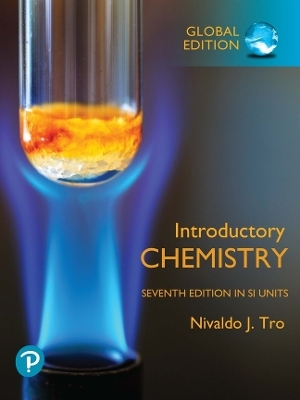
How to Invent and Protect Your Invention – A Guide to Patents for Scientists and Engineers
John Wiley & Sons Inc (Hersteller)
978-1-118-41010-3 (ISBN)
- Keine Verlagsinformationen verfügbar
- Artikel merken
JOSEPH P. KENNEDY, PhD, MBA, FACS, is a Distinguished Professor of Polymer Science and Chemistry at The University of Akron. He has authored four scientific books and more than 700 publications, and is the inventor of more than 100 issued U.S. patents, which have generated billions of dollars in revenue. His research interests include ionic polymerization and the design and creation of useful polymeric materials, particularly for medical applications. WAYNE H. WATKINS, BS (engineering), MBA, JD, is Associate Vice President for Research at The University of Akron, adjunct professor of law, and Vice President of the University of Akron Research Foundation where he leads technology commercialization initiatives. He has particular expertise in intellectual property management and new enterprise creation and growth. He is a principal in three companies in chemistry and biotechnology. ELYSE N. BALL, BS (journalism), JD, is a Project Manager for the University of Akron Research Foundation where she regularly works on technology licensing projects and supporting university startup companies. She is involved in technology development in the polymer science, advanced energy, and biomedical fields.
PREFACE: HOW THIS BOOK CAME TO BE AND FORWHOM IT IS WRITTEN xi ACKNOWLEDGMENTS xix ABBREVIATIONS xxi 1. THE U.S. PATENT SYSTEM 1 1.1. What is a Patent? 1 1.2. Why Should You File A Patent? 5 2. ORIGINS OF U.S. PATENT LAW 7 2.1. A Brief History of Patent Law 8 2.2. The Fountainhead: The Constitution and the U.S. Patent System 9 2.3. Are Patents a Monopoly? 11 3. HOW TO INVENT: INTELLECTUAL ASPECTS OF INVENTING 12 3.1. On the Definition of Creativity 12 3.2. A Flaw in Patent Law 13 3.3. Patentable Creativity 14 3.4. Intellectual Requirements of Inventing 15 3.5. The Process and Product of Inventing 16 3.6. Pioneering versus Mediocre Inventions: The Touch of the Expert 17 3.7. The Importance of Industrial Experience 17 3.8. The Ultimate Goal: Innovation 18 4. A SHORT SUMMARY OF INTELLECTUAL PROPERTY 20 4.1. Patents 21 4.2. Trade Secrets 21 4.3. Copyrights 22 4.4. Trademarks and Servicemarks 23 4.5. Other Types of Intellectual Property 24 5. REQUIREMENTS OF PATENTABILITY 26 5.1. What is Patentable? 26 5.2. Patentable and NonPatentable Subject Matter 27 5.3. The Three Classes of Patents 28 5.4. The First Law of Inventing 28 5.5. The Second Law of Inventing 44 5.6. The Structure of the Patent Document 48 6. HOW DOES THE PATENT PROCESS WORK? 55 6.1. The Notebook 56 6.2. The Provisional Patent Application 56 6.3. The (Regular or Nonprovisional) Patent Application 58 6.4. Prosecution: Convincing the Patent Examiner 60 6.5. Continuation, Continuation-in-Part, and Divisional Applications 64 6.6. Allowance and Issuance 68 6.7. Loss of Patent Rights 68 6.8. Challenges and Changes to Issued Patents 69 6.9. Summary of Chapters 5 and 6 73 7. INFRINGEMENT AND FREEDOM TO OPERATE 74 7.1. The Parable of the Knife 75 7.2. Types of Infringement 77 7.3. Infringement Suits 79 7.4. When to Sue an Infringer 80 7.5. Freedom to Operate 80 7.6. Prior Commercial Use Rights 82 8. BIOTECHNOLOGY, COMPUTER SOFTWARE, AND BUSINESS METHOD PATENTS 84 8.1. Biology Meets Patents 85 8.2. Computer Software Patents 89 8.3. Business Method Patents 90 9. WHO IS THE INVENTOR? 91 9.1. Conceiving an Inventive Idea 92 9.2. Joint Inventors 93 9.3. Naming Inventors on Patent Applications 95 9.4. Qualifications to Be an Inventor 95 10. OWNERSHIP 96 10.1. Selling, Licensing and Assigning Patents 97 10.2. Hired-to-Invent and Shop Rights 97 10.3. Inventing on Your Own Time 98 10.4. Non-Compete Agreements 98 10.5. The Bayh--Dole Act 99 11. TRANSLATING IDEAS INTO ECONOMIC REWARD 102 11.1. The Costs of Patenting 102 11.2. Assessment 104 11.3. Selling and Licensing a Patent 110 11.4. Start-Ups, Spin-Outs, and Joint Ventures 112 11.5. Patenting and Marketing Departments; Technology Transfer Offices 113 11.6. Patent Valuation 114 12. FOREIGN PATENTS 116 12.1. Distinctive Features of U.S. Patent Law 117 12.2. The International Patent Cooperation Treaty 118 12.3. The European Patent Union 120 12.4. Other Foreign Patent Practices 121 12.5. Enforcing Patents Abroad 123 12.6. Choosing Whether to File a Foreign Patent Application 124 13. INNOVATION 125 13.1. Innovation Is More Than Invention 125 13.2. What Drives Innovation 126 13.3. The Law of Innovation 126 13.4. Companies and Innovation 127 13.5. The Innovation and Job Creation Relationship 127 13.6. Discovery Push versus Market Pull Innovation 128 13.7. Incremental versus Disruptive Innovation 128 13.8. Sources of Innovation 129 13.9. Innovation and Public Policy 129 14. CONCLUDING THOUGHTS 131 14.1. Is the Patent System Worth the Costs? 131 14.2. The Patent System Leads to Additional Research and Knowledge Creation 133 14.3. Fostering Competition 134 14.4. Results of Ignorance of the Patent System 135 14.5. How Law and Technology Yield Patents 136 APPENDIX 1: IMPORTANT FORMS 139 APPENDIX 2: SELF-ASSESSMENT QUESTIONS 177 GLOSSARY 196 INDEX 209
| Co-Autor | Elyse N. Ball |
|---|---|
| Verlagsort | New York |
| Sprache | englisch |
| Maße | 280 x 298 mm |
| Gewicht | 1204 g |
| Themenwelt | Naturwissenschaften ► Chemie |
| Recht / Steuern ► Allgemeines / Lexika | |
| Recht / Steuern ► EU / Internationales Recht | |
| Technik | |
| ISBN-10 | 1-118-41010-6 / 1118410106 |
| ISBN-13 | 978-1-118-41010-3 / 9781118410103 |
| Zustand | Neuware |
| Haben Sie eine Frage zum Produkt? |
aus dem Bereich


